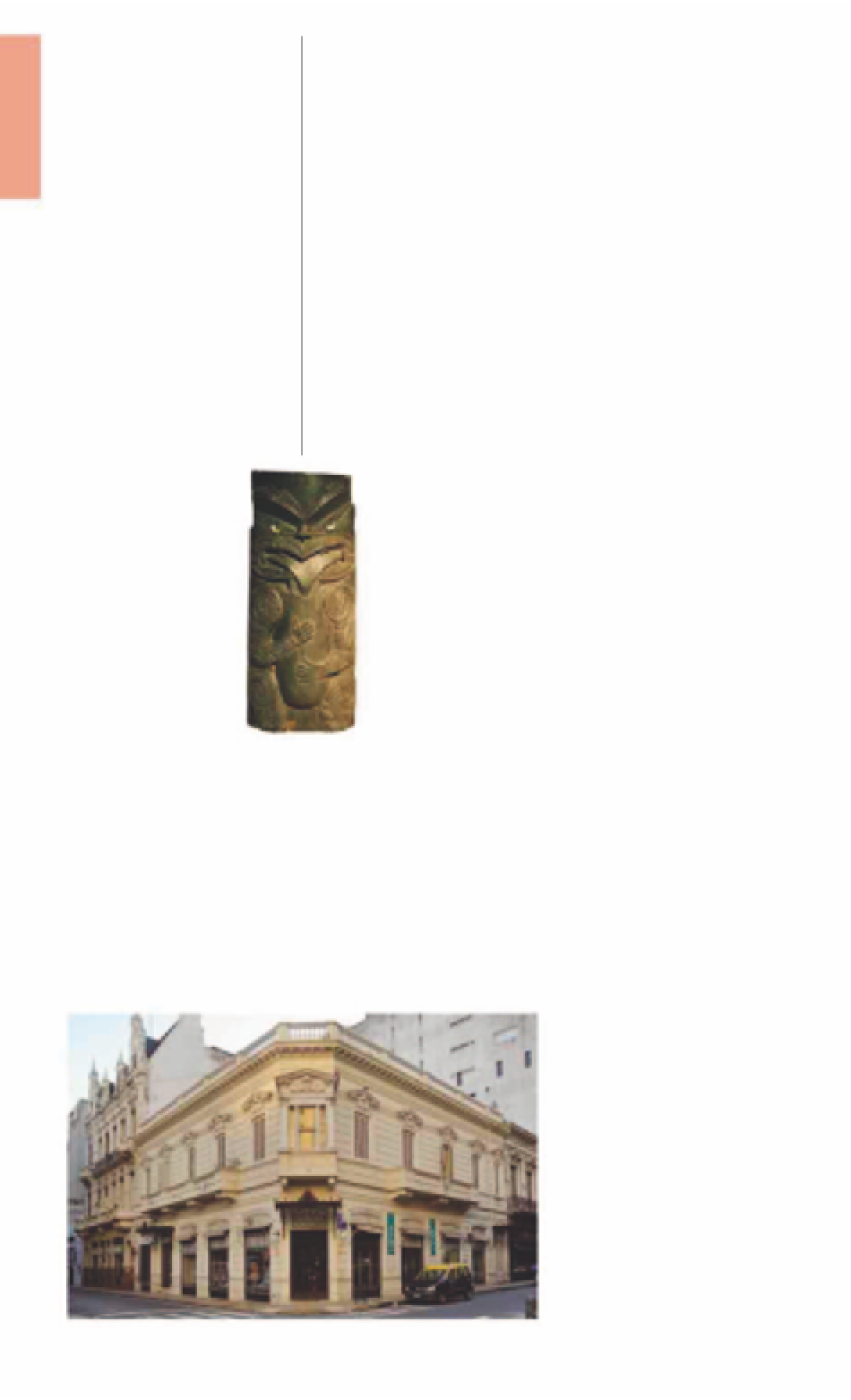Travel Reference
In-Depth Information
5
Museo de
la Ciudad
Defensa 219.
City Map
3 E5.
Te l
(011) 4343-2123.
7
Iglesia del
Santisimo Rosario
y Convento de
Santo Domingo
Defensa 422.
City Map
1 E1.
Te l
(011) 4331-1668.
mass removal to Recoleta
following the outbreak of yellow
fever in 1871. One of the rooms
is an excellent reconstruction of
the living quarters of a typical
patrician family of the period.
Plaza de
Mayo, Catedral.
Open
11am-7pm
Mon-Fri, 10am-8pm Sat, Sun, & hols.
&
Bolívar.
museo
delaciudad.buenosaires.gob.ar
Mon & Wed free.
∑
6
Museo
Etnográfico
Moreno 350.
City Map
3 E5.
Te l
(011) 4345-8196.
8
12:30pm
Mon-Fri, 6:30pm Sat, 11am Sun.
3-7pm Mon-Fri.
5
Located in the heart of the
financial district, the Museo
de la Ciudad is on the first floor
of an elegantly adorned
pharmaceutical building that
was part of the Farmacia de la
Estrella company, created in
1838 by Swiss immigrant
Silvestre Demarchi. His sons
moved it here in the 1890s.
Regarded as one of the most
important chemists in
South America, it is still
operating, selling a
stock of traditional
and homeopathic
medicines on the
ground floor.
The displays in the
museum are rotated
every few months
and are dedicated to
the everyday life of
porteños, the people
who live in Buenos
Aires. They include
aristocratic hats and
combs used in the
19th century and
mate
gourds still used by all
tea-sipping Argentinians. The
much-prized art of
fileteado
is
also well showcased. The
building itself is of interest, as
it is one of the few remaining
town houses from the period
when wealthy Argentinians
lived in the center - before
Work on this church began in
the mid-18th century, and was
completed 100 years later. It
was built on land acquired by
monks of the Dominican Order
in 1601, soon after their arrival
in Buenos Aires. The area
stretched from Defensa down
to the riverfront, present-day
Paseo Colón, and was at first
given over to vegetable allot-
ments, livestock corrals, and a
primitive chapel.
The church contains some
interesting altars and artworks
from the 17th and 19th cen-
turies. People also come to the
site to visit the mausoleum of
Manuel Belgrano, designer of
the Argentinian national flag. It
is located on the east side near
the entrance and is marked by
an eternal flame. Post-
Independence, the building
was secularized and used as a
museum and observatory. It
was set ablaze by anti-clerical
Peronists in 1955 and later
reconsecrated in 1967.
Catedral,
Bolívar, Plaza de Mayo.
Open
Feb-
Dec: 1-7pm Tue-Fri, 3-7pm Sat &
Sun.
Closed
Jan.
8
4pm Sat & Sun.
∑
museoetnografico.filo.uba.ar
Founded by the scholar Juan B.
Ambrosetti in 1904, this museum
aims to document Argentina's
vast indigenous culture.
It houses ethnographic
items ranging from
masks and cooking
implements used by
the Araucana tribes
that lived in the area
before the arrival of
Europeans, to accounts
of Fuegian natives
transplanted from their
homes at the “end of
the world” to East
London. Exhibits
include pelts from
Bolivia, feathered
head dresses from
Chaco, and bark
from Brazil. Also on display is
jewelry and sculpture of the
Mapuche - the only extant
indigenous society in southern
South America. Many Mapuche
were uprooted from their
Andean settlements in the late
19th century and relocated to
the province of Buenos Aires.
Wooden Maori exhibit from
New Zealand, Museo
Etnográfico
8
Manzana de
las Luces
Perú 272.
City Map
3 E5.
Te l
(011) 4343-3260.
Plaza de
Mayo.
8
3pm Mon-Fri; 3pm,
4:30pm, & 6pm Sat & Sun.
∑
manzanadelasluces.gov.ar
Iglesia de San Ignacio:
Te l
(011) 4331-
2458.
Open
11am-7pm daily.
8
3-6pm Sat & Sun. Colegio Nacional de
Buenos Aires:
Te l
(011) 4331-0733.
While the nickname “Block of
Enlightenment” was only coined
in the 19th century, learning
and liberty have been the
guiding principles of this con-
stellation of buildings for more
than 400 years. The land was
given to the Jesuits by the
Spanish colonial authorities in
1616, who established a church
and school. After being rigorously
The Farmacia de la Estrella that houses the Museo de la Ciudad
For hotels and restaurants see pp278-83 and pp288-99






































